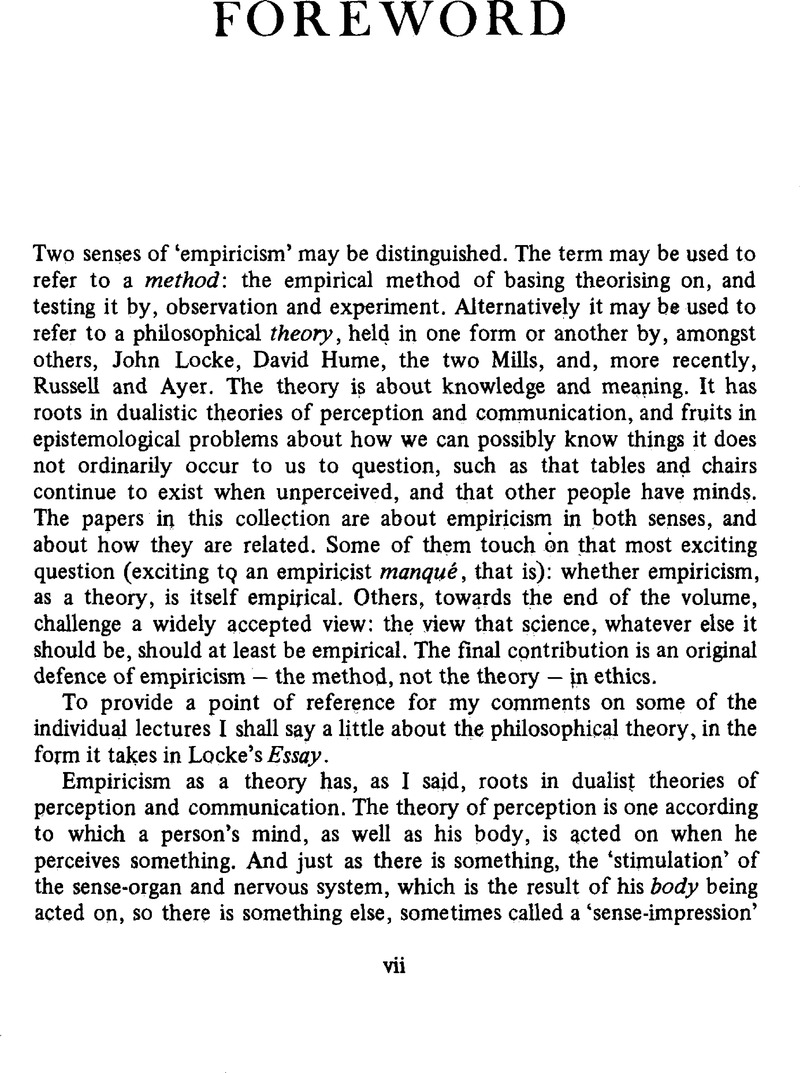No CrossRef data available.
Article contents
Foreword
Published online by Cambridge University Press: 08 January 2010
Abstract

- Type
- Foreword
- Information
- Royal Institute of Philosophy Supplements , Volume 9: Impressions of Empiricism , March 1975 , pp. vii - xxi
- Copyright
- Copyright © The Royal Institute of Philosophy and the contributors 1975
References
page viii note 1 The term ‘sense-impression’ - or ‘impression’, for short - has its origin in the assimilation of the passivity of the mind in perception to that of wax in receiving an impression from a seal. See Descartes, , Rules for the Direction of the Mind, Rule 12.Google Scholar
page viii note 2 I say ‘at best’ because of the problem, with sense-impressions, of satisfying the conditions for the use of a proper name, e.g. that the thing named should be re-identifiable.
page x note 1 Essay, bk II, ch. 9, section 8.
page x note 2 Ibid., section 9.
page x note 3 Essay, bk II, ch. 1, section 4.
page xii note 1 In Wann, T. W. (ed.), Behaviourism and Phenomenology (Chicago, 1964).Google Scholar
page xiii note 1 Ibid, pp. 153–4.
page xvii note 1 Mind, LXIII (1954) pp. 226–33.Google Scholar
page xvii note 2 Locke, Essay, Bk I, ch. 1, Section 2.
page xvii note 3 Ibid, Bk II, ch. 30, Section 1–2.




